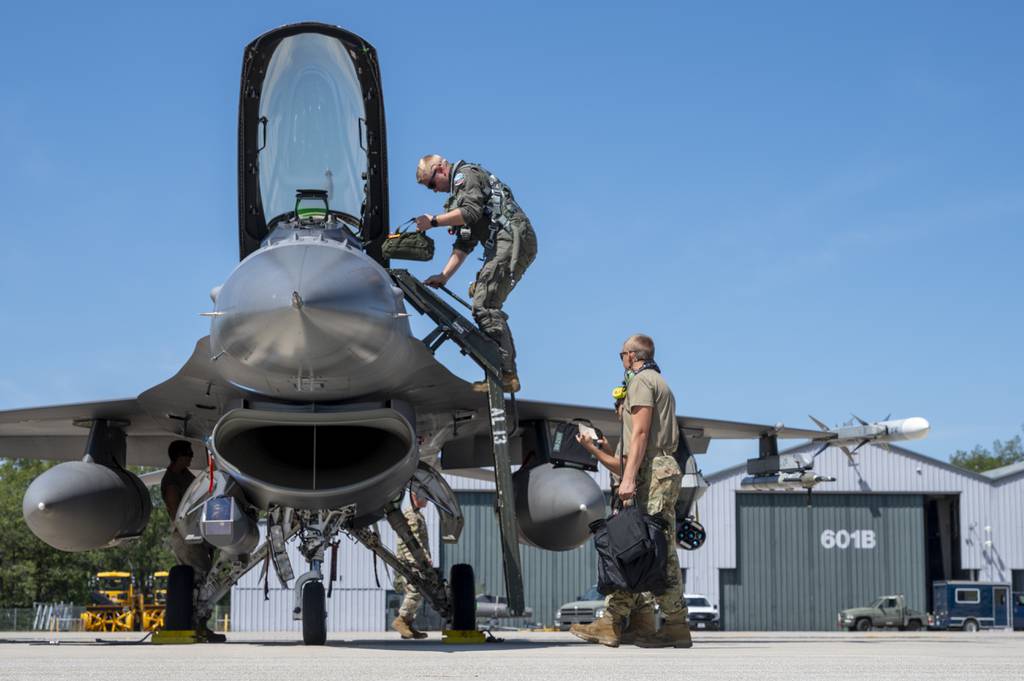BALTIMORE — The Pentagon’s artificial intelligence office is reviving a series of worldwide trials meant to advance its vision of seamless connectivity and coordination, known as Joint All-Domain Command and Control.
The return of the Global Information Dominance Experiments, or GIDE, under the direction of the Chief Digital and Artificial Intelligence Office, or CDAO, comes after a months-long hiatus and amid an explosion of public interest in AI and its potential to augment humans, military or otherwise.
CDAO boss Craig Martell on May 3 said his team took the reins of the experiments to “understand what’s the right way to get after JADC2.” The office was previously charged with crafting a so-called data integration layer, which would help collect information from disparate sources and present them in a unified manner.
“We are not sitting down and writing up requirements that will get built five years from now, and then nobody will want to use it,” Martell said at the AFCEA TechNet Cyber conference in Baltimore. “Every experiment we do, it’s not just: ‘Hey, folks, did it work? Thumbs up, thumbs down.’ We’re actually building out metrics to ask, ‘Is this faster? Did we do that right? Has this number increased?’”
The multibillion-dollar JADC2 endeavor aims to link forces far afield — across land, air, sea, space and cyber — and support speedy battlefield decision-making. Such an approach is necessary, defense officials say, to deal with the military advancements of China and Russia, premier national security threats.
The first of the relaunched tests, the fifth overall, known as GIDE V, was held at the beginning of the year and featured Pentagon officials and multiple combatant commands and installations around the world.

Three more iterations, GIDE VI through GIDE VIII, are expected in 2023. Martell said he and his colleagues work “with the combatant commands on a pretty regular cadence,” aiming to dissolve barriers between regions.
“If you think about the Indo-Pacific fight, Africa Command might have some information that’s necessary. Central Command might know something about what’s going on in their domain that could be necessary,” Martell said. “So we think about this as global … and we’re asking these dataflow questions, these workflow questions.”
The initial GIDEs were spearheaded by Northern Command and North American Aerospace Defense Command. The two entities are led by Air Force Gen. Glen VanHerck.
GIDE I in December 2020 tied together Strategic Command, Transportation Command, Southern Command and Indo-Pacific Command. It also involved the undersecretary of defense for intelligence and security. GIDE II in March 2021 expanded participation and welcomed the Joint Artificial Intelligence Center, one of four entities the CDAO subsumed.
Later versions pulled in Project Maven, designed to process imagery and full-motion video from drones and other surveillance assets and to detect potential threats, and manpower from the Department of the Air Force’s Chief Architect Office.
VanHerck in 2021 said GIDE embodies a “fundamental change in how we use information and data” to maintain an upper hand.
“Right now, the threats we face and the pace of change in the geostrategic environment continues to advance at really alarming rates,” he said at the time. “We’ve entered an era of new and renewed strategic competition, and this time, we’re facing two peer competitors, both nuclear-armed, that are competing against us on a daily basis.”
Colin Demarest was a reporter at C4ISRNET, where he covered military networks, cyber and IT. Colin had previously covered the Department of Energy and its National Nuclear Security Administration — namely Cold War cleanup and nuclear weapons development — for a daily newspaper in South Carolina. Colin is also an award-winning photographer.








